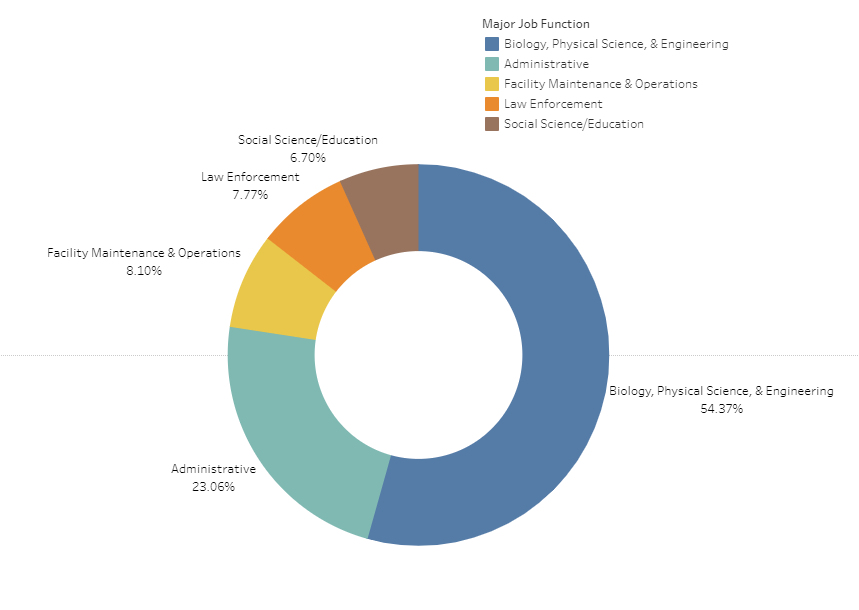The U.S. Fish and Wildlife Service is primarily responsible for conserving, protecting, and enhancing fish and wildlife and their habitats. They manage federal programs related to migratory birds, endangered species, interjurisdictional fish and marine mammals, and inland sport fisheries.
They are a division of the Department of the Interior and employ 8,160 specialists and offers more than 70 careers to choose from. Positions are available in every state and U.S. territory.

USFWS FUNCTIONS
If you enjoy working outdoors and with wildlife there are many opportunities for you to explore. This Federal service performs the following functions:
- Acquires, protects and manages unique ecosystems necessary to sustain fish and wildlife.
- Operates a National Fish Hatchery System.
- Protects fish and wildlife from dislocation or destruction of their habitats.
- Provides financial and professional technical assistance to States to enhance their fish and wildlife resources.
- Offers enforcement, management and professional technical assistance to other agencies.
- Disseminates and enforces regulations for the protection of wildlife.
- Conducts programs and provides professional technical assistance to other agencies for the proper use and protection of fish and wildlife habitat.
- Educates the American public through high quality fish and wildlife-oriented experiences.
- Communicates information essential for public awareness and understanding of the importance of fish and wildlife resources.
JOB AND INTERNSHIPS LISTINGS
Openings are available in law enforcement, administrative fields, budget analysts, IT, geographers, wildlife refuse managers, fish biologists, hydrologists, engineering maintenance, architects, surveyors, and various other occupations.
There are many jobs currently open nationwide and in the US Territories.
APPLYING FOR JOBS
When you identify a job announcement of interest, print out a copy and follow the detailed guidance provided. If you have questions there is a human resource specialist listed towards the end of the document that can answer your questions.
A federal application and resume is considerably different than the standard one page private sector resume. Submit all required forms and information listed in the job announcement and review the application process before submitting your application. A sample federal style resume is available for you to use as a template for your application.
SUMMARY
There are many reasons to consider federal employment. The average annual federal worker’s compensation, pay plus benefits, is $125,049 compared to just $70,081 for the private sector. Average salary exceeds $90,000 and new hires can receive student loan payoff assistance, relocation and cash incentives for hard-to-fill positions. The benefits and retirement packages are exceptional. A larger percentage of professionals and fewer service and clerical positions contribute to higher average salaries.


